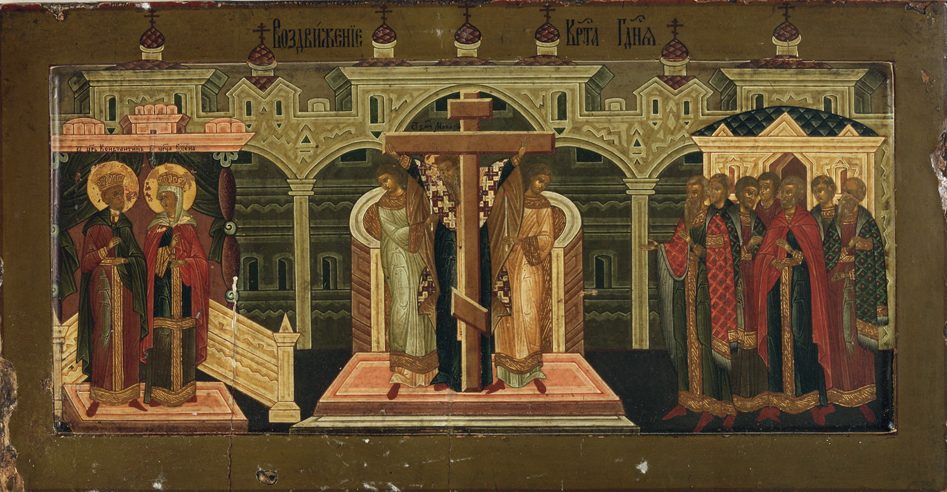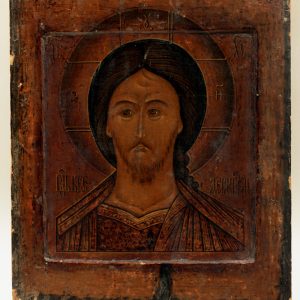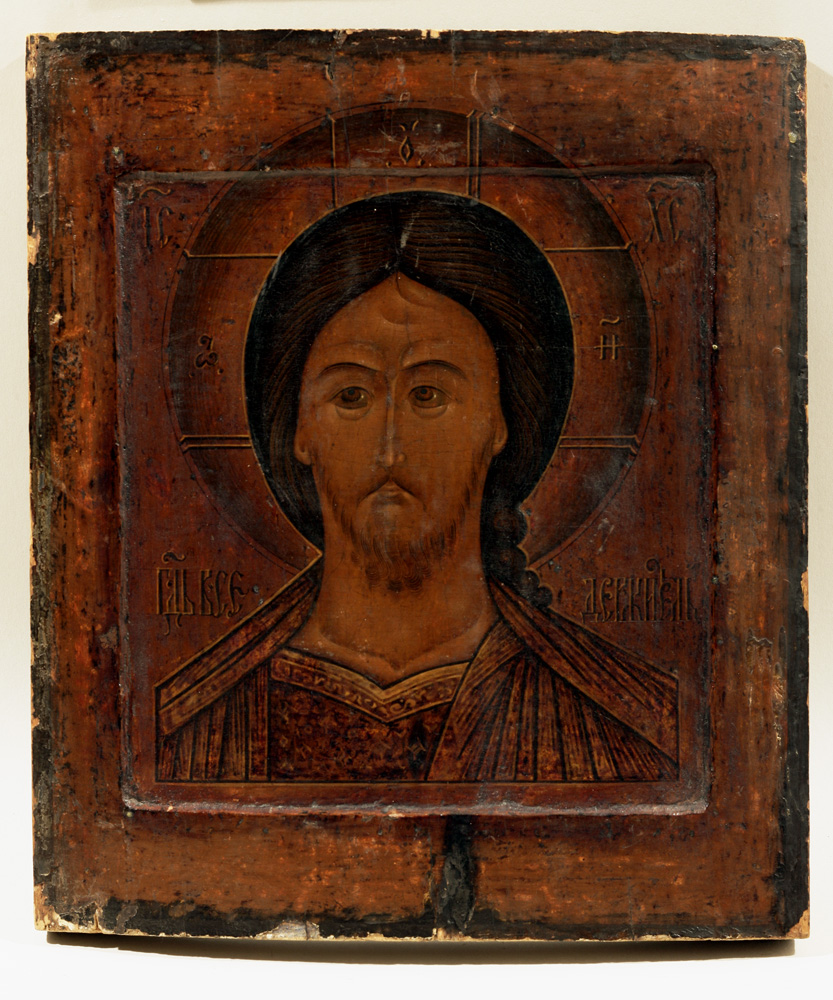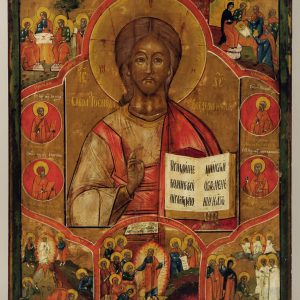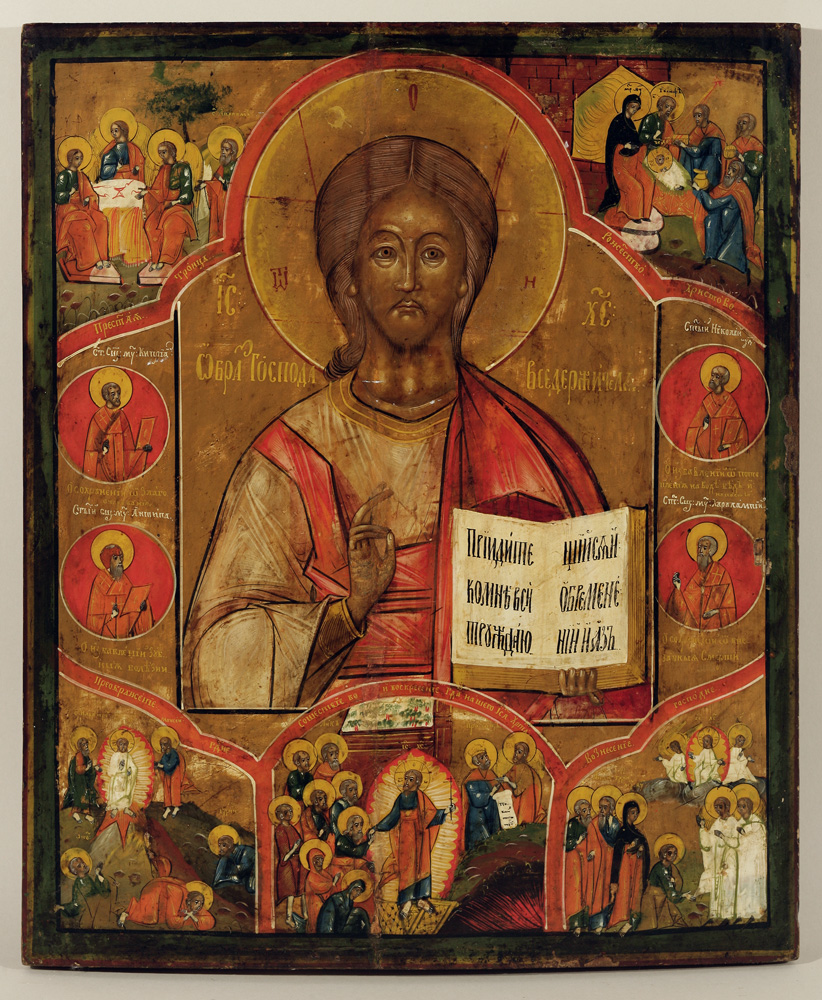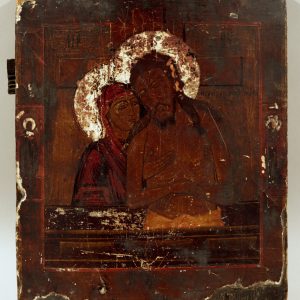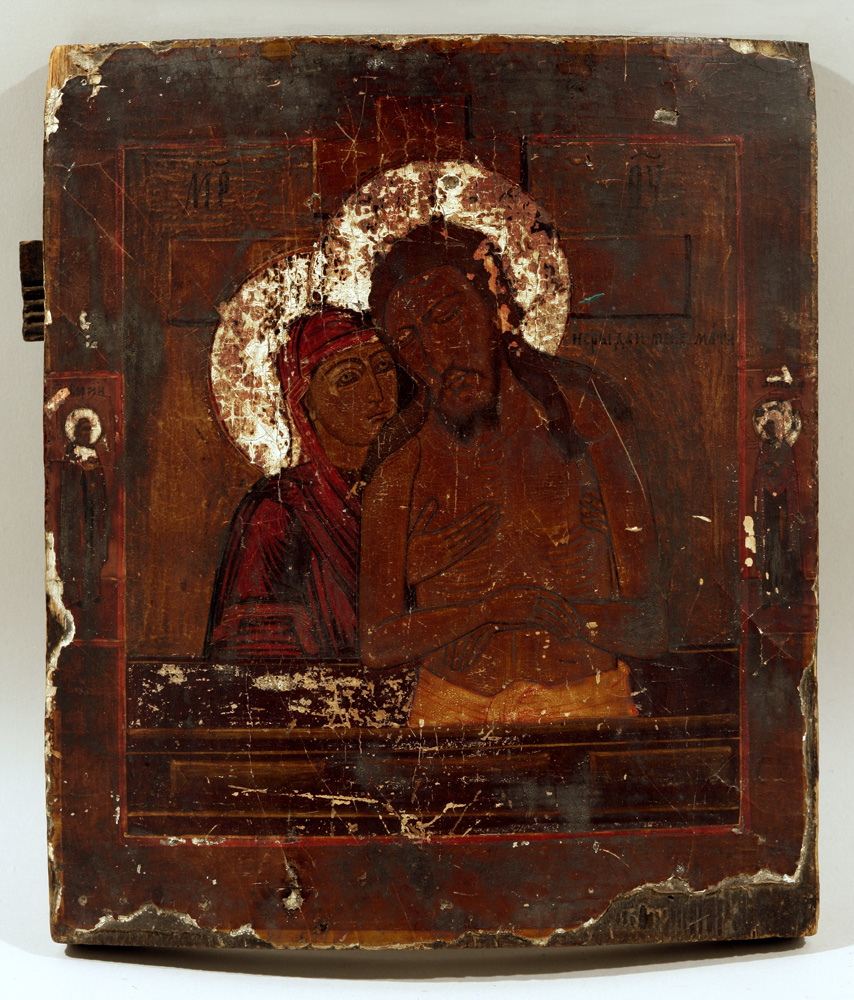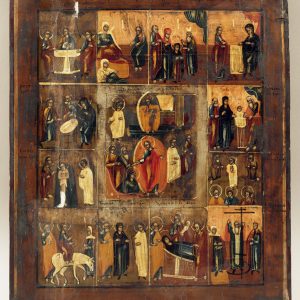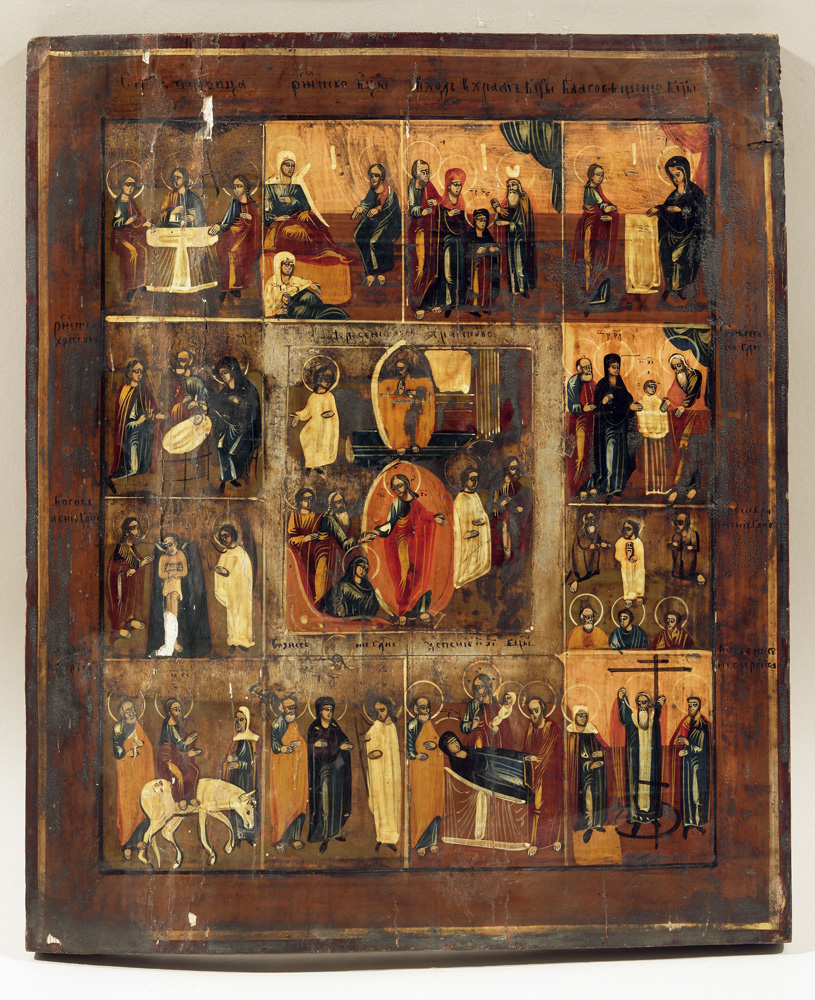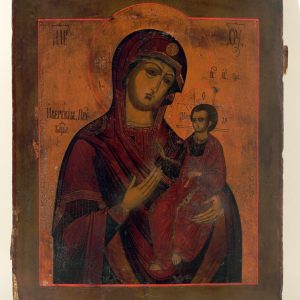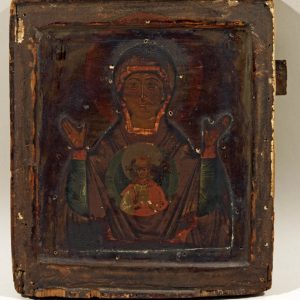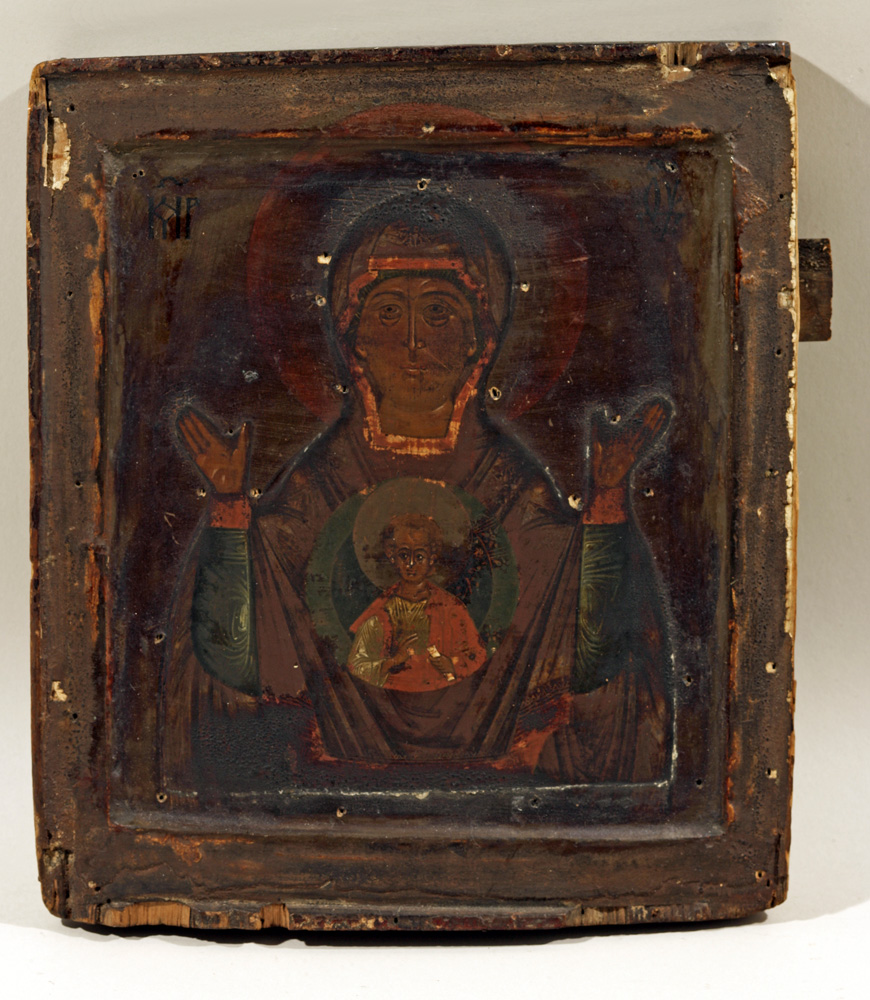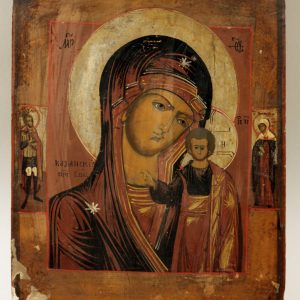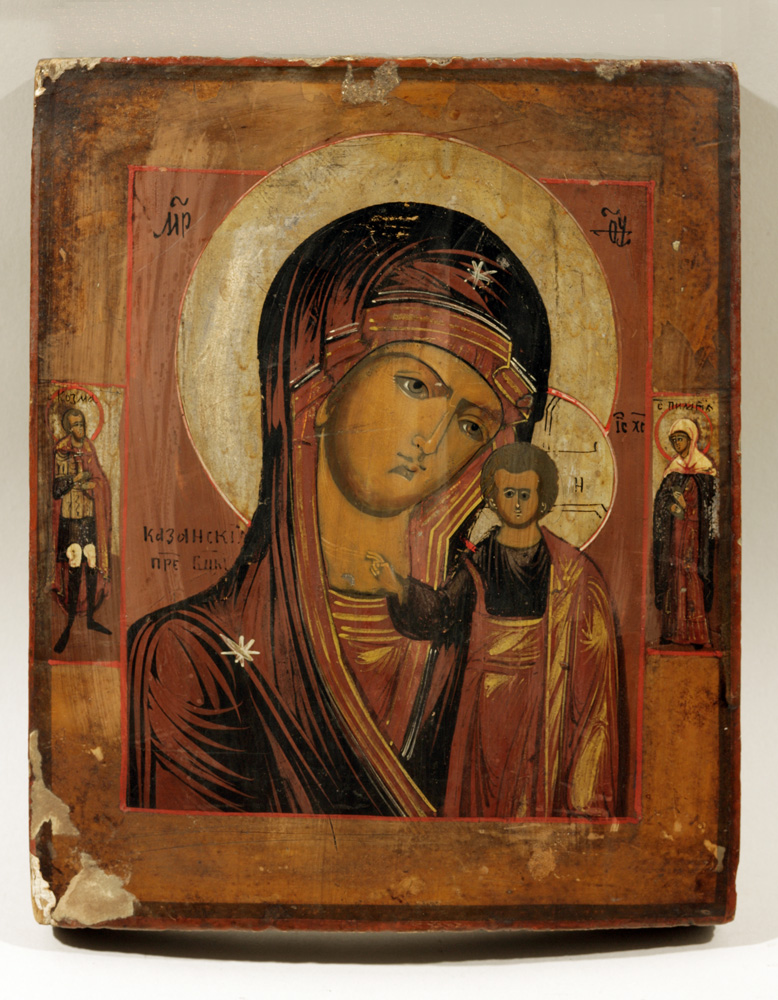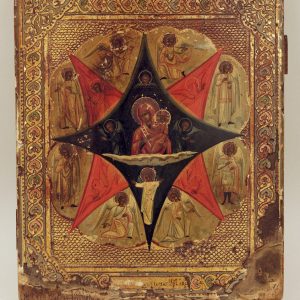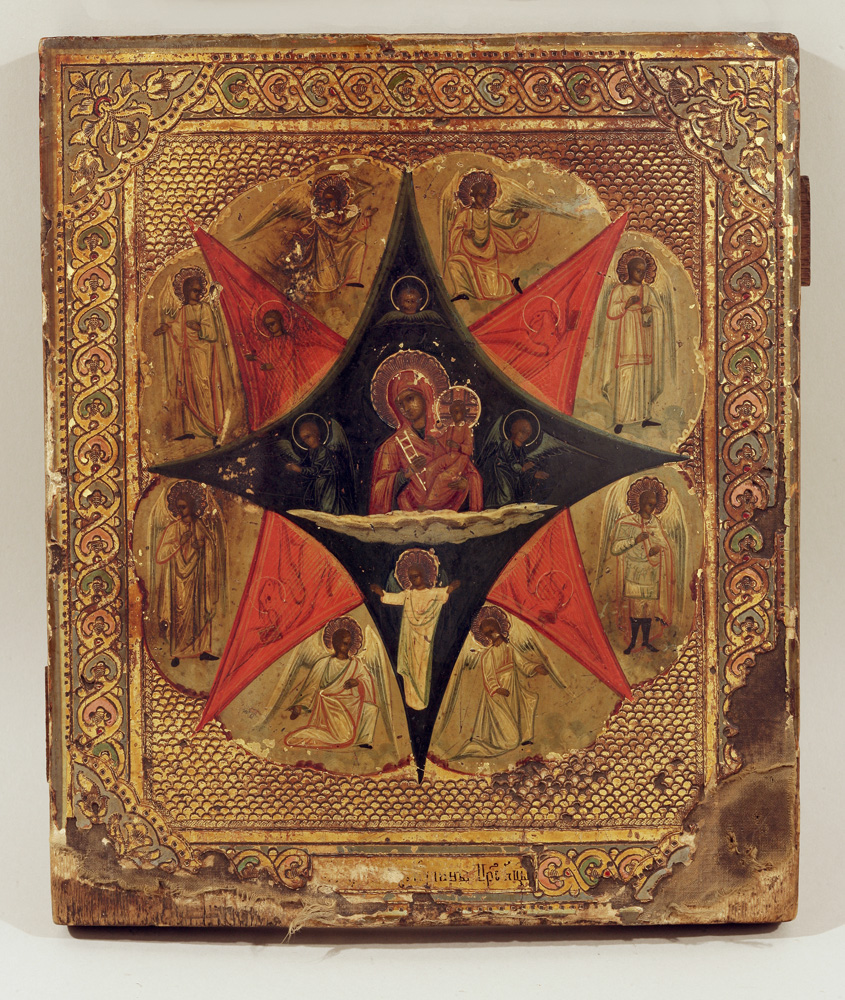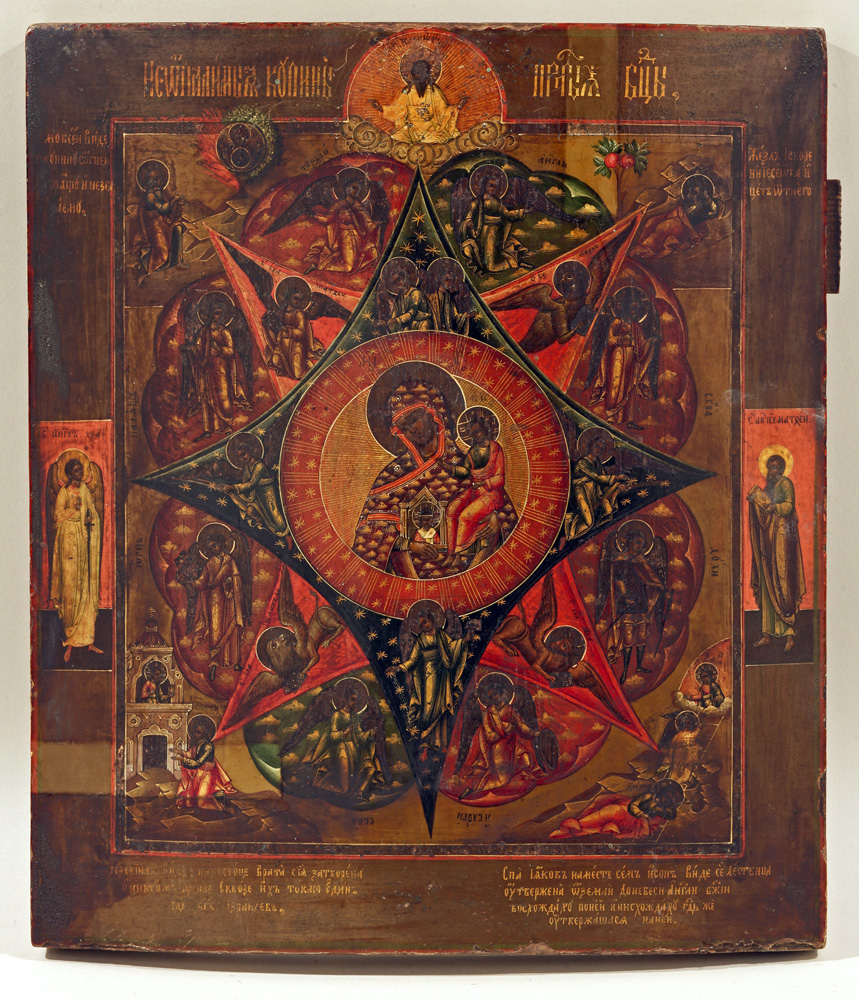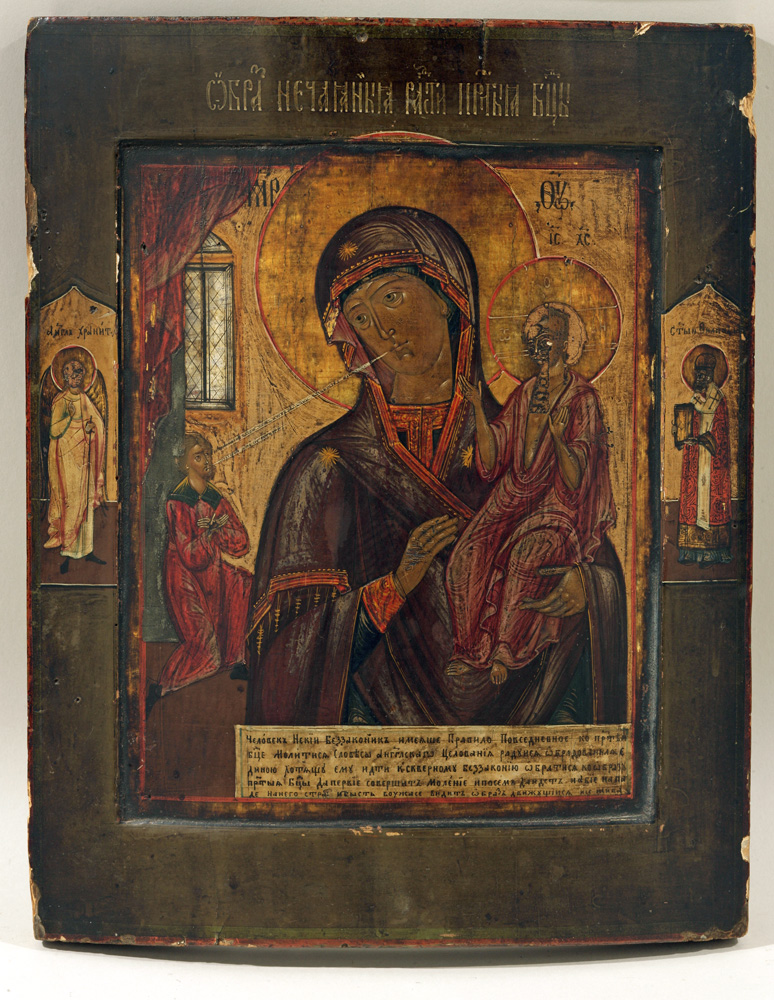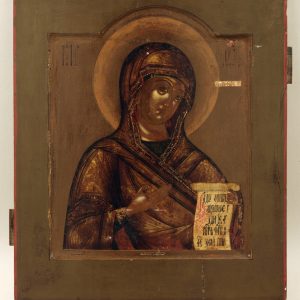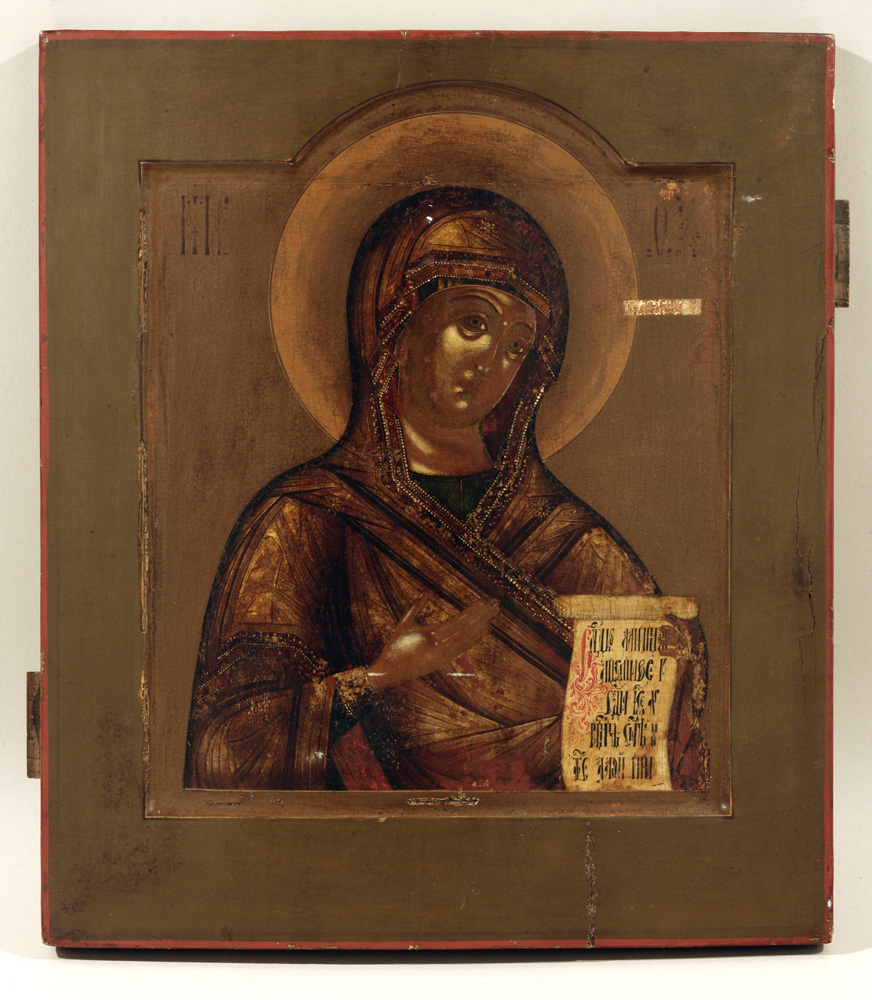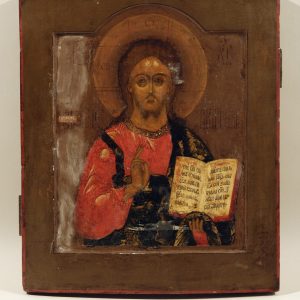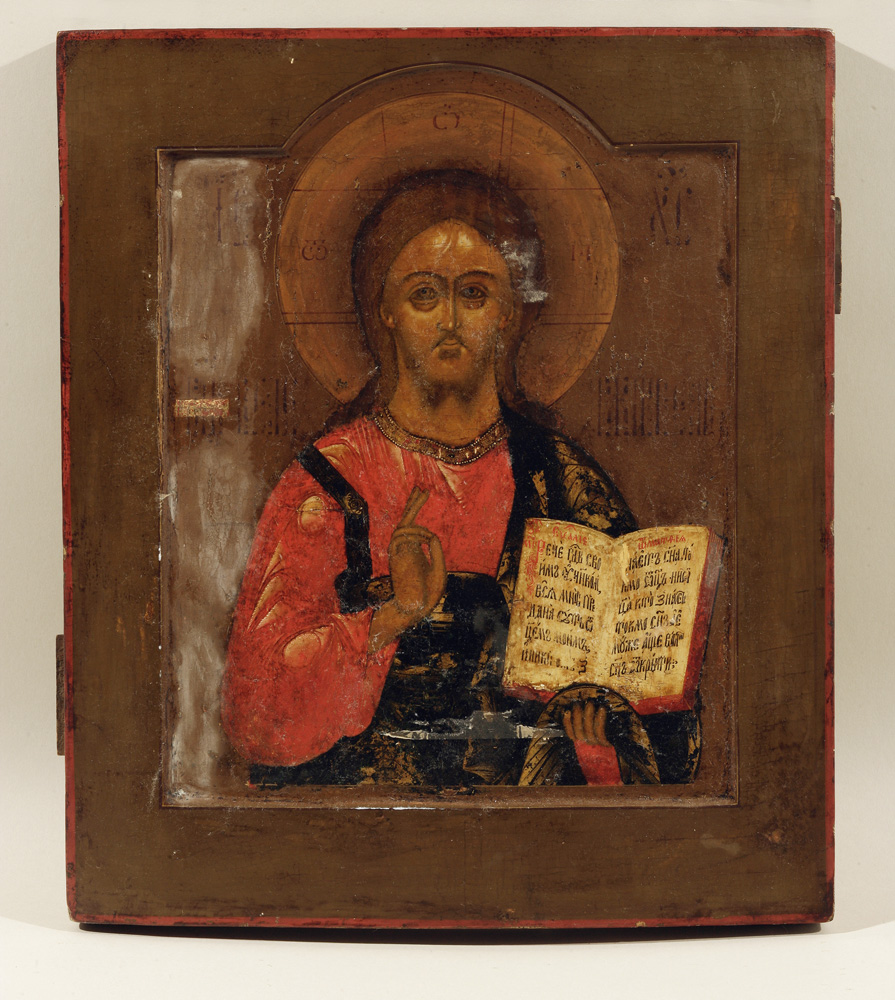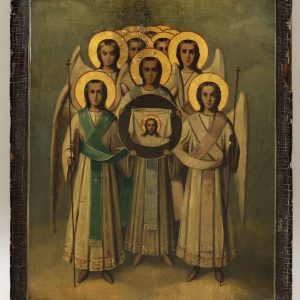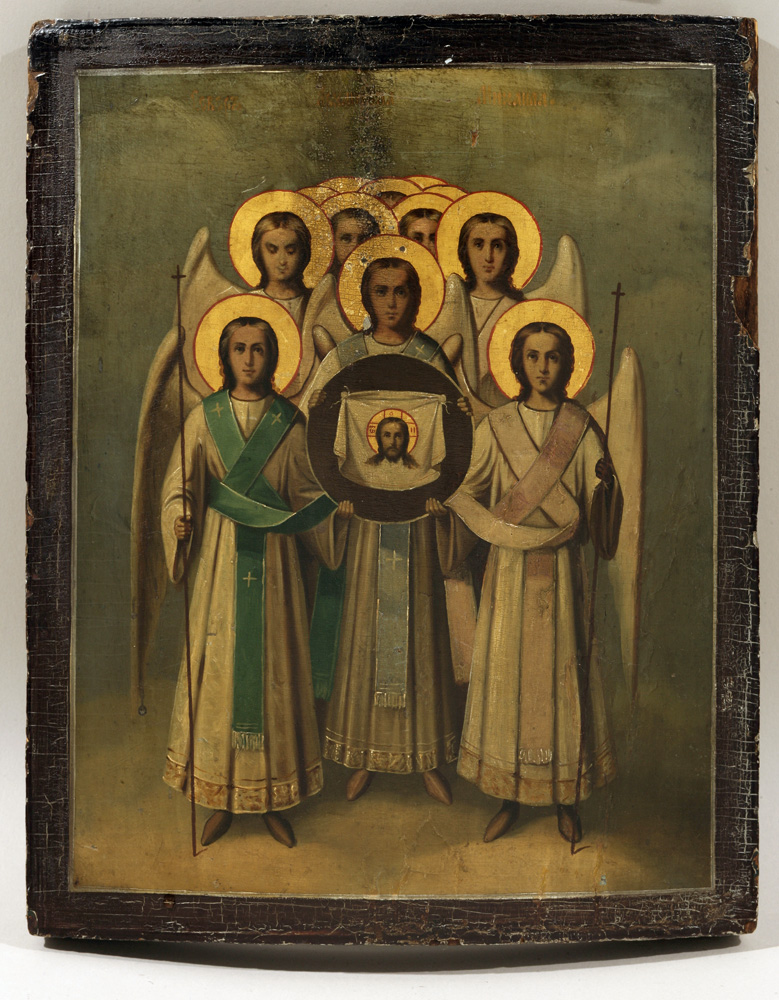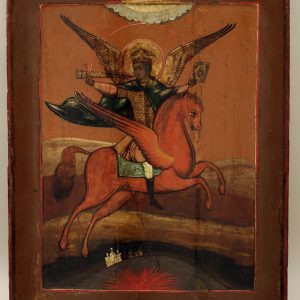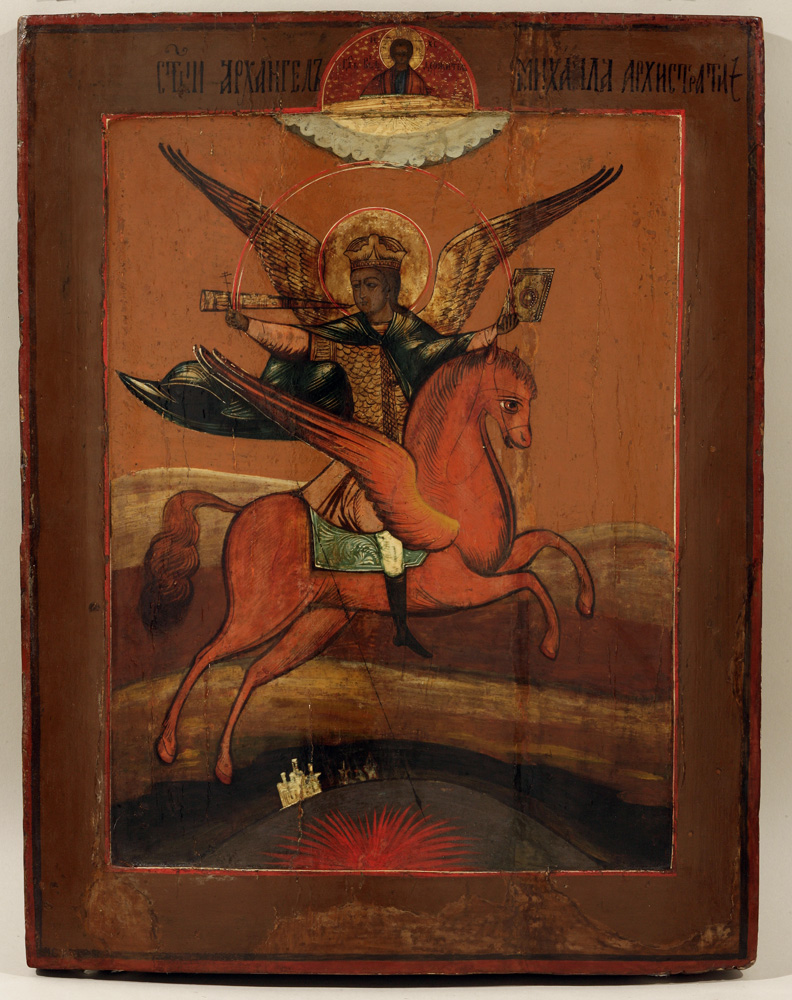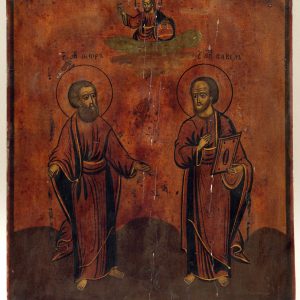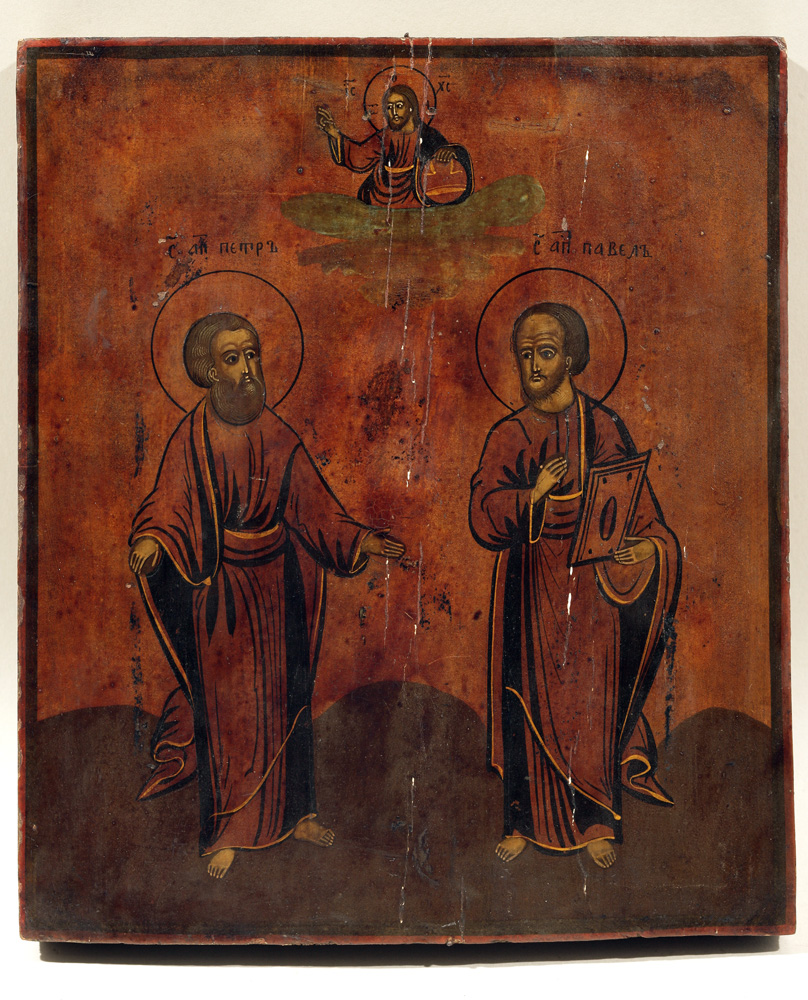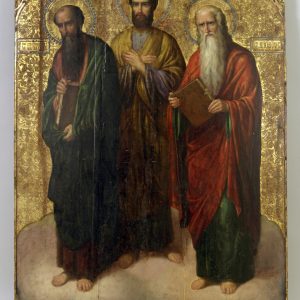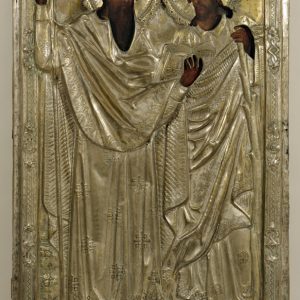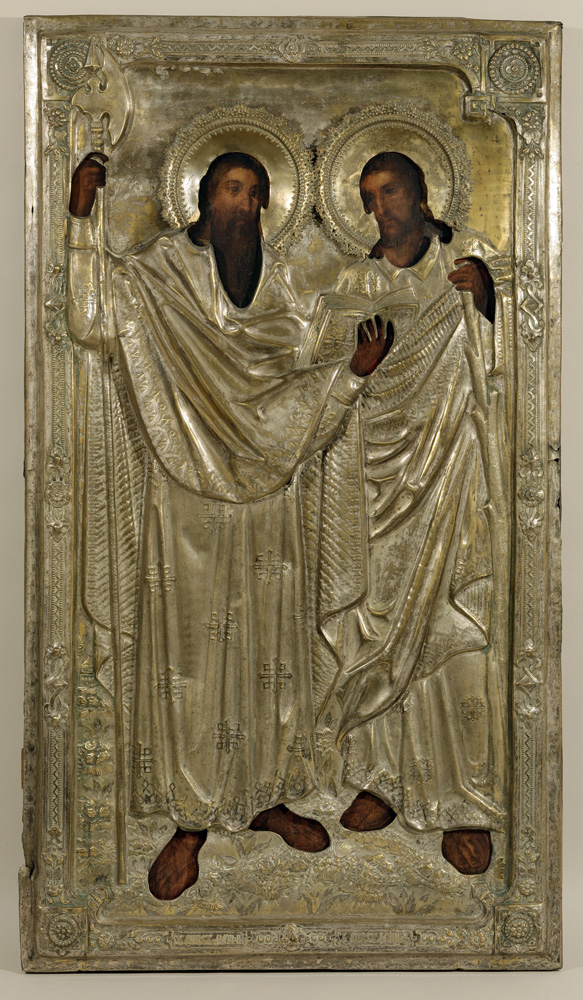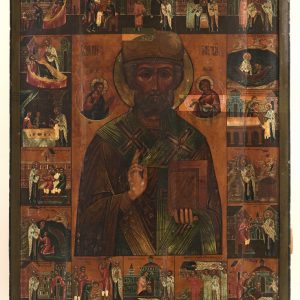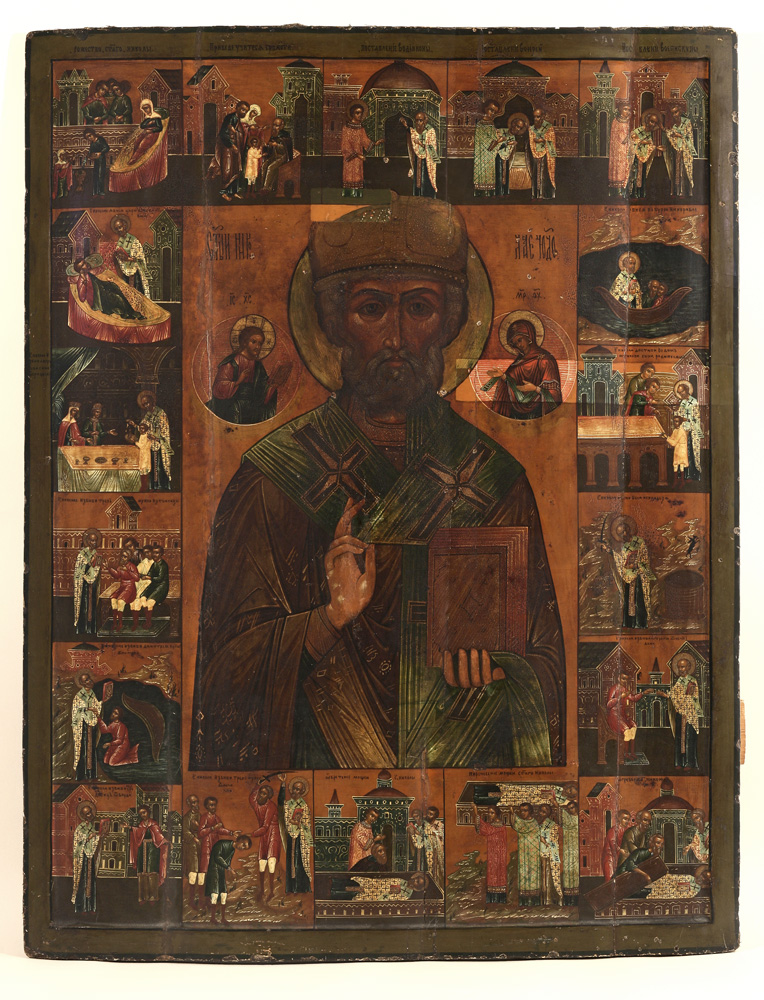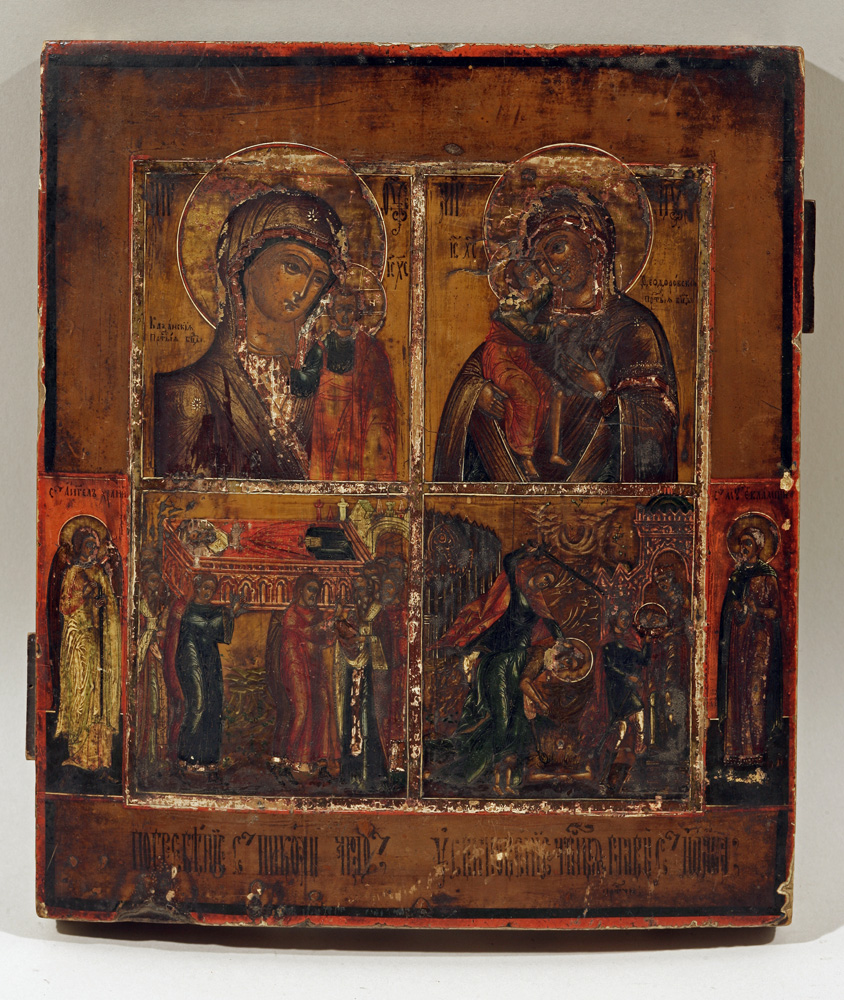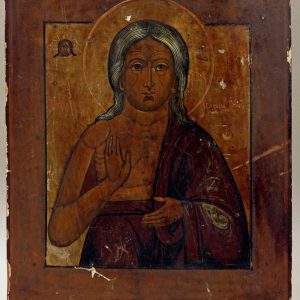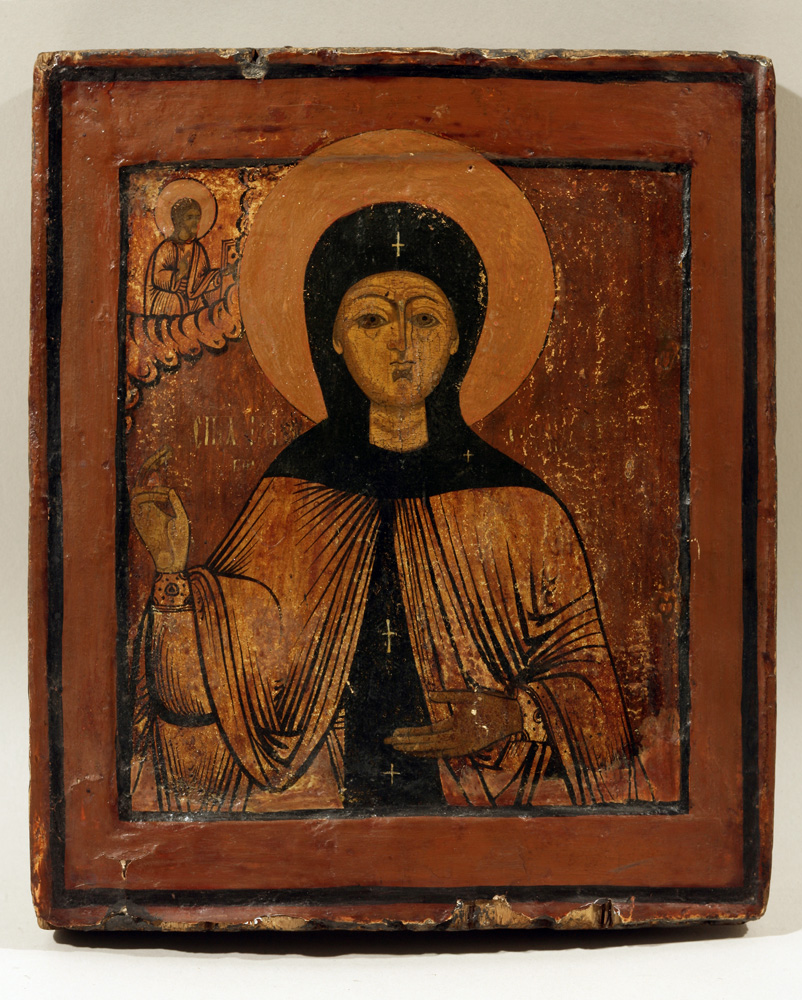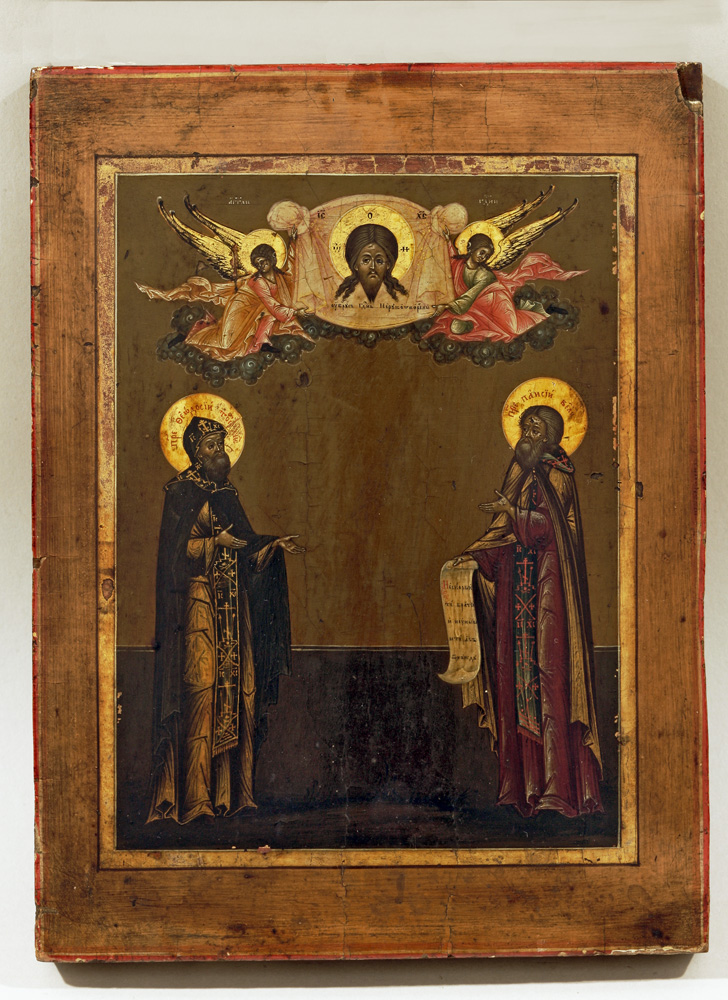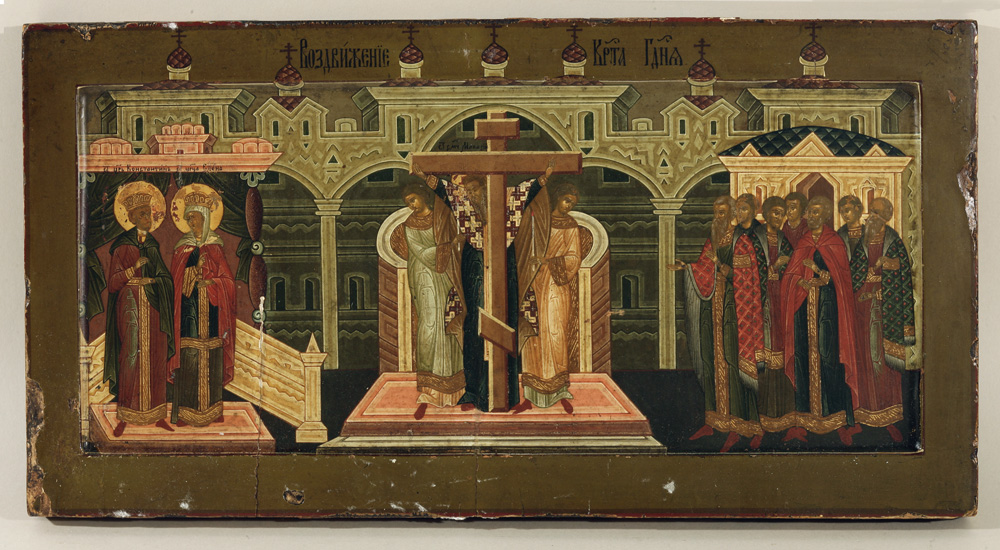Christian inheritances to the Russians come from Byzantium. Vladimir of Kiev, in his search for a spiritual tradition for his country, studied Judaism, Islam, and Christianity. He sent emissaries to different countries with the mandate to explore the different faiths. The ambassadors reported back referring to the liturgy celebrated in Rome, “Between them is no happiness…and we see not admitting beautifulâ€. However, from Santa Sophia in Constantinople, they reported “We do not know if we was in earth or heaven, we can not forget the abundances of beautifulâ€.  After these reports, Vladimir converted to Orthodoxy, and he imported Byzantine and Greek iconographers and mosaic muralists to construct the Basilica of Santa Sophia in Kiev.
In the Orthodox traditional iconography, the term “icon†is applied universally to any representation of sacred art.  It is in the West where it became associated with a Holy image which was then painted on a prepared wood support using egg tempera and within Orthodox traditional cannon.
Each icon is a powerful unique art experience, which can open the door to our most inner selves. They are timeless and universal, inspiring serenity and inviting us to reflection. They are the art of ‘constant’ remembrance. Sometimes metal covers were especially made for them -called okhlads – either to protect them from the handling in devotions, to enhance their beauty or as memorials. The faithful convey reverence by bowing, kneeling, kissing, and touching the icon with the forehead. In Russian Orthodox homes icons are displayed in special places, called the “krasniy ugolâ€- beautiful corner. An icon is, according to Mikhaïl Allenov, a constant reminder of God’s presence in the Church, in home and in ones life. This custom is an act of veneration, not of worship.
Stylistically, these iconic forms are not mean to accurately represent the anatomically correct body, but to reveal those individuals’ ascetic elements. The ‘Holy State’ is represented by a Halo surrounding the head; the ‘face’ is the main focal point and is represented frontally with seductive ‘eyes’, requiring eye contact to provoke closeness and awareness. In addition, the ‘gold leaf’’ used in background to preserves devotes’ concentration, keeping him from distraction and always focused toward the theological message.

